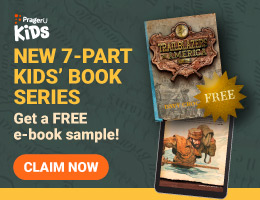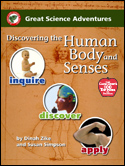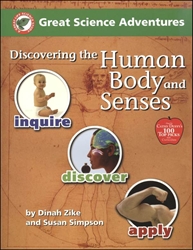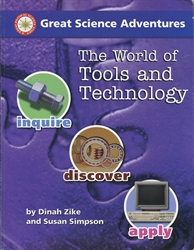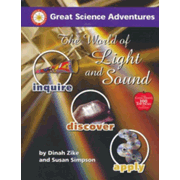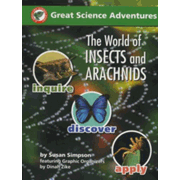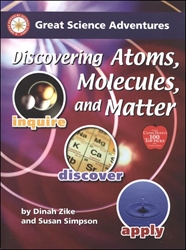This arts-and-crafts approach to science is totally different from anything else I have seen. One of the authors, Dinah Zike is well known for her Big Book of Books and Activities and other books where she shows how to cut and fold paper into all sorts of creative forms to be used by students as tools for learning and presenting information. In Great Science Adventures these are called 3D Graphic Organizers, and they are used throughout the series.
More than half of each PDF book consists of pages to be cut and put together in one fashion or another. About half of these activity pages are for creating little booklets that correspond with each of the 24 lessons. These booklets have preprinted pictures and text to convey the factual information on each topic so we need not use outside information resources unless they are assigned as research for older students.
But lessons are much more than the creation of booklets. Two- to three-page lesson plans give you key concepts, vocabulary words, and a number of activity ideas from which to choose. Each lesson might take from one to three days to complete. You should be able to complete two of the Great Science Adventures books per year if you do science two or three days per week.
The authors say the curriculum is appropriate for grades K through 8, but I suspect younger students will find most of the work too difficult. Older students need to be assigned challenging activities from “Experiments, Investigations, and Research” at the end of each lesson plan.
Each lesson begins with reading the corresponding booklet. Some text in small type should be read only by or with older students, but all of the large-type text should be read with everyone. Then you assign appropriate vocabulary words. Instructions for creating a vocabulary book are in the introduction.
Every lesson includes work with some sort of graphic organizer. Other cut-and-paste pages in the book are used to make these. Children might be cutting, pasting, labeling, writing, drawing, or coloring depending upon the topic and their ability level. Children often refer to the booklets for information to write in the organizers.
Detailed lab activities called Investigative Loops are in many of the lessons. These require children to use scientific method as they ask questions, make predictions, follow procedures, measure, observe, record data, come up with conclusions, and maybe pursue other questions that arise from the experiment. Common household items are used, but it will take time and planning to gather and prepare materials for the investigations.
Some lessons, instead, have a demonstration or other activity that does not require application of the scientific method.
The last part of each lesson offers a number of optional activities. Some might be done by the group, and some might be done independently by older students. These cover the range of learning styles and age abilities. Some examples from a single lesson: “Use clay to form a mesa, a butte, or both. Compare and contrast the two.” “Write a story that takes place in the American Southwest on a mesa.” “Research Stone Mountain, Georgia. Report on your findings.” And “Investigate hydrodynamics.” Sometimes books or internet sites are listed for reference.
After the lesson plans are two pages on assessment that might be easy to overlook. However, these pages offer some very practical ideas parents will probably want to use, so make a point to read them.
The Great Science Adventures series is divided into three groups: life science, physical science, and earth science. You should probably rotate through these three areas as you choose titles so that children get exposure to a broad range of science. There are 16 books in the series covering topics such as plants; insects and arachnids; the human body; vertebrates; ecosystems; health and safety; tools and technology; energy, forces, and motion; light and sound; magnets and electricity; atoms, molecules and matter; space; atmosphere and weather; landforms and surface features; oceans and freshwater; and rocks and minerals.
You are given permission to reproduce pages for your “classroom” so purchasing one book per topic will be sufficient for your family.





